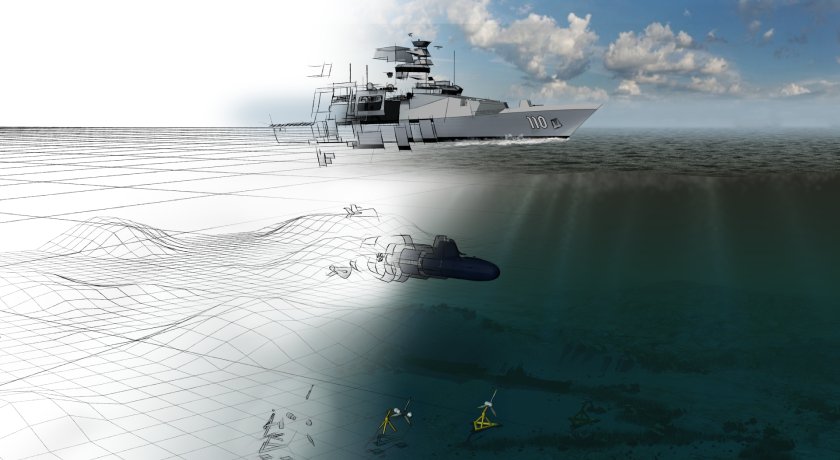Promoted by BMT Defence & Security.
To continue reading the rest of this article, please log in.
Create free account to get unlimited news articles and more!
The Practice of Asset Management
Australia’s Asset Management Council defines asset management as: ‘life cycle management of physical assets to achieve the stated outputs of the enterprise’. Asset management examines each specific organisation and structures the approach to determine the appropriate mix of activities and artefacts, goals and objectives, practitioners and asset management system(s) to deliver optimum value across the enterprise.
Asset management melds sound decision-making with high-level strategic goals by executing asset-related activities throughout the enterprise. It integrates asset-related decisions with organisational goals while optimising total asset costs through careful acquisition, sustainment and disposal activities across the life cycle, from short- and medium-term tactical operations to long-term strategic objectives.
Asset management has been officially recognised as a key enabler to Defence’s sustainment efforts; Capability and Acquisition Sustainment Group (CASG) policy mandates sustainment efforts align to ISO 55000/55001/55002, the internationally recognised standards for asset management.
However, application of these standards to Australia’s most complex naval vessels must be carefully implemented. Asset management is a generic concept that can be applied across a wide-range of industries; its innumerable applications can be easily misinterpreted. In the context of complex naval vessels, it is important to clearly articulate and define the application within Defence.
The Challenge for Sustaining Maritime Assets
The Government has embarked on the largest fleet reconstitution since the 1940s through a national shipbuilding program. Australia’s national naval enterprise will build and deliver new surface ships and submarines while operating and maintaining the current fleet. As today’s fleet ages, sustainment will become more difficult.
Upkeep needed to establish and maintain seaworthiness will increase while updates needed to improve reliability and maintainability will become more important. Capability upgrades will become vital to retaining regional superiority. Increased operational tempo in the maritime battlespace will drive operational commanders to demand greater availability and capability across the fleet.
Reactive sustainment is extremly costly and will not deliver seaworthy ships to meet Defence’s needs. Ships in the nation’s naval fleet are considered complex because of their high criticality, high replacement costs, regulatory requirements and their significant value to the nation.
Asset management is a valid and proven method for sustaining such complex assets. Repeated calls within Defence request government and commercial industry alike to collectively implement asset management as a method for optimising availability, capability and affordability across the collective Royal Australian Navy (RAN) fleet.
Asset Management Applied to the Australian Fleet
The Fleet Life Cycle Management (FLCM) concept applies asset management to the naval fleet. It is a proactive approach that applies proven asset management practices, principles and methodology to RAN ships and submarines to ensure material readiness, operational capability and seaworthiness can be achieved and maintained within allocated budgets.
The RAN’s capability manager expects warships, submarines, support and auxiliary ships and fleet support craft to be sustained through appropriate maintenance regimes (i.e. upkeep), planned modernisation (i.e. updates and upgrades), Integrated Logistics Support (ILS) functions and supply chains without exceeding budgetary limits.
FLCM develops the asset management methodology beyond the simplistic view of only management of assets, data collection or asset maintenance; it implements a more holistic and strategic life cycle perspective that addresses short-, medium- and long-term management issues across Australia’s National Naval Enterprise for government entities and commercial industry alike.
It integrates Asset Management Systems, life cycle managers, and strategic objectives through artefacts and activities that bind critical framework elements into a single, cohesive and uniform method for managing current and future fleets (and the multitude of transitions between old and new mission systems).
FLCM can provide a broad and responsive structure that supports current needs while retaining flexibility to meet future requirements and to support evolving Defence needs in the naval environment and maritime battlespace.
Since the federal government added Industry as the ninth Fundamental Input to Capability (FIC), major systems like surface ships, submarines and the support systems (e.g. training facilities, infrastructure etc) are now managed and maintained by a larger set of decision-makers.
A FLCM framework can unite these stakeholders across the three key domains – Operational Capability, Technical Compliance, and Business Intelligence – into a single, overarching and standardised functional architecture specifically tailored for Australia’s National Naval Enterprise.
FLCM encompasses asset management activities carried out in perpetuity for each vessel, each class of vessels and the collective naval fleet. Applying FLCM across the RAN’s entire fleet can be done in phases, or by individual sustainment programs, or in parallel across multiple classes of ship using a single integrated strategic framework.
Applying asset management through FLCM implementation will bolster Defence’s materiel sustainment methodology, ensuring Australia will maintain an enduring and lethal maritime capability throughout the 21st century.
Article written by; Toby Lemerande, Head of Discipline for Asset Management at BMT Defence and Security, Australia. Toby Lemerande attained the rank of Commander in the US Navy before retiring in 2015. Prior to joining BMT, Toby worked at ASC to develop and implement the Life Cycle Management office in the Collins Submarine Program. As a recognised expert in Asset Management, Toby holds the titles: Fellow (International Society of Engineering Asset Management), Adjunct Senior Research Fellow (University of South Australia) and Director (Asset Institute, South Australia Division).
BMT’s Fleet Life Cycle Management Course
BMT’s 5-day course, Introduction to Fleet Life Cycle Management, provides an overview of asset management applied to complex naval assets and focusses on fundamental concepts and understanding of requirements and complexities associated with managing naval assets across the life cycle, from design & production through in-service operations & maintenance and disposal.
BMT also runs courses on Whole Life Warship Capability Management and Submarine Design and Engineering. For more information contact:
 Login
Login






